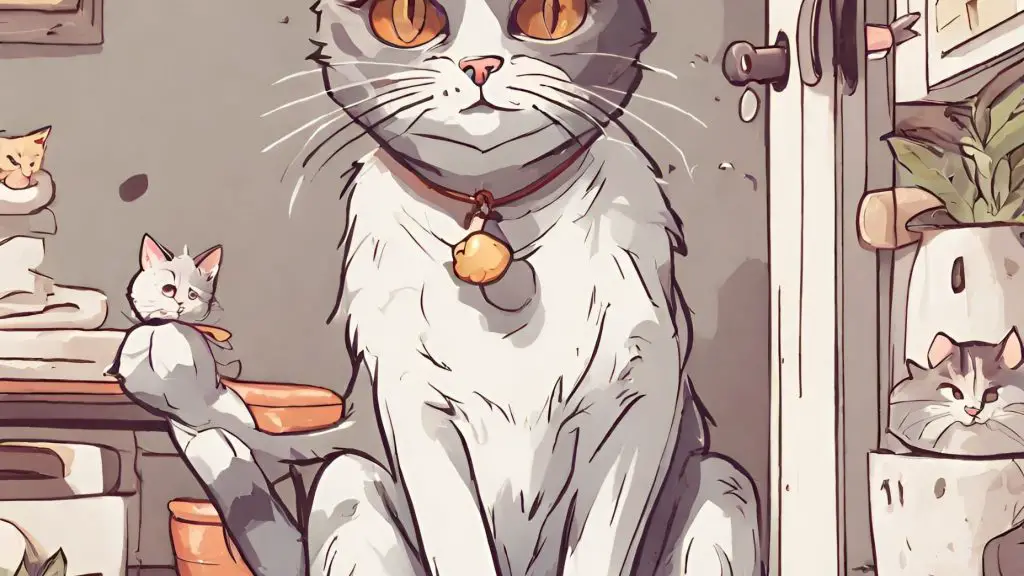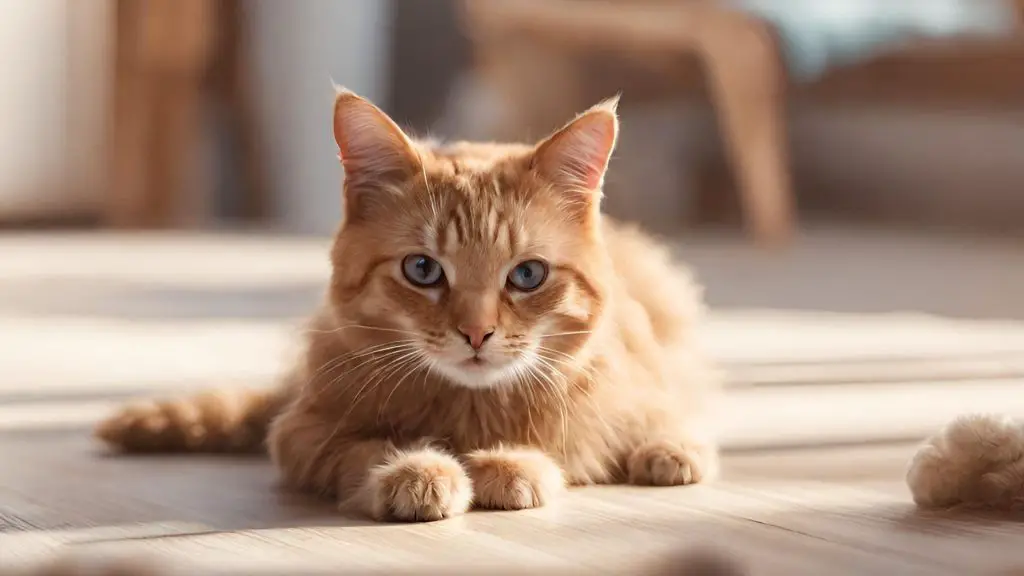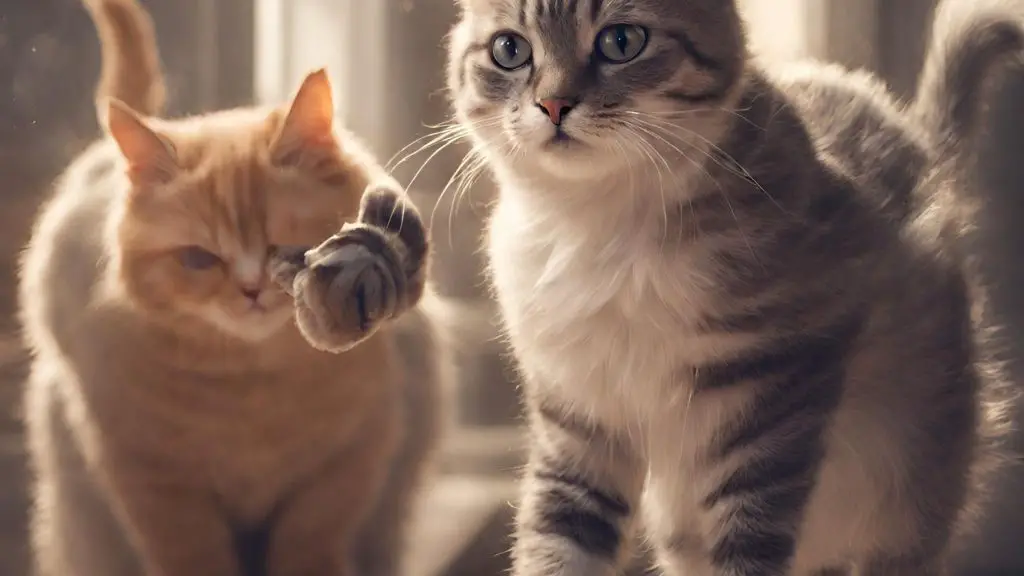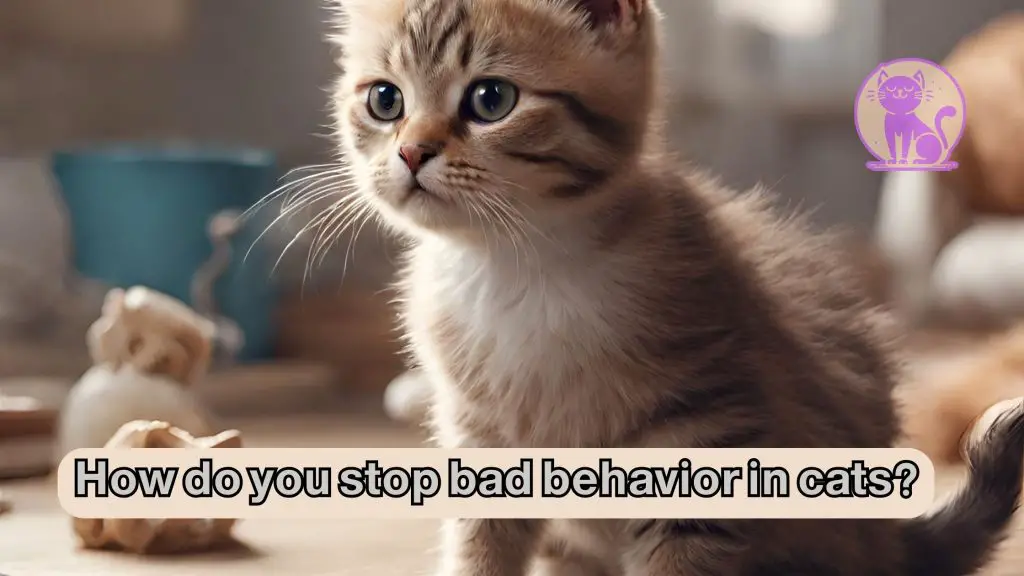Living with a feline friend can be filled with moments of joy and, at times, a few surprises when it comes to behavior. If you’re grappling with the question of how to stop bad behavior in cats, it’s essential to understand that your whiskered companion is not just being ‘naughty’ – there’s always a reason behind the actions. Engaging in cat behavior modification is not about punishment; it’s about understanding, guiding, and positively reinforcing your pet. Thankfully, with a variety of cat training techniques now more accessible than ever, turning those tricky behaviors around might just be easier than you think. So let’s explore the humane, loving pathway to a better-behaved kitty.
Understanding the Root Causes of Bad Behavior in Cats

Addressing the complexities of feline conduct begins with uncovering why cats might exhibit troublesome behaviors. Identifying stressors and medical problems, alongside interpreting your cat’s communication efforts, can lead to strategies for dealing with naughty cats and controlling cat aggression more effectively.
Identifying Stressors in Your Cat’s Environment
Environmental stress can have a pronounced effect on your cat’s wellbeing. Factors such as changes in the household, a new pet, or even rearranged furniture can trigger stress responses. Recognizing these stressors is the first step in creating a calm and comfortable atmosphere for your cat.
The Impact of Medical Issues on Behavior
Medical issues can manifest as aggression or other behavioral changes in cats. Regular health check-ups are crucial for early detection and treatment of conditions that could be influencing your cat’s conduct. Do not overlook subtle signs, as they may be the only indicators of your cat’s discomfort or pain.
Communication: What is Your Cat Trying to Tell You?
Cats communicate through more than just meows and purrs; they also use body language and behaviors as a way to express themselves. By understanding these cues, you can better assess what they need or how they’re feeling, leading to more harmonious human-feline interactions and preventing misunderstandings that might lead to bad behavior.
Setting the Groundwork for Good Behavior

Instilling desirable habits in our feline friends begins with a solid foundation. By tailoring our homes and daily routines to suit the natural inclinations of our cats, we pave the way for a structured and nurturing environment. This is not only beneficial for their well-being but also instrumental in correcting cat misbehavior. A predictable and secure atmosphere can significantly eliminate unwanted cat behavior, setting both pet and owner up for a successful relationship.
Creating a Cat-friendly Environment
A cat’s environment deeply influences its behavior, and a space that caters to their needs can promote harmony. To construct a cat-friendly abode, consider the following:
- Provide various scratching posts and cat trees for climbing and scratching, integral to a cat’s daily routine.
- Ensure access to cozy hiding spaces where your cat can retreat and feel safe.
- Position food, water, and litter boxes in quiet, easily accessible areas.
- Introduce window perches or seats to satisfy their curiosity and need for environmental stimulation.
Establishing Routines and Boundaries
Maintaining a clear and consistent routine can alleviate stress and confusion in your pet, directly impacting their propensity for mischief. A structured approach includes:
- Feeding at the same times each day to create a predictable schedule.
- Allocating time for play and interaction to ensure your cat feels engaged and loved.
- Setting clear boundaries about off-limits areas to prevent destructive exploring.
These simple but effective routines assist in establishing a sense of order for your cat, fostering an environment that discourages misbehavior.
Positive Reinforcement: Rewarding Good Behavior
Rewarding your cat for good behavior is a cornerstone of positive reinforcement, a powerful tool in shaping their actions. Celebrating successes can include:
- Offering treats or extra cuddle time when your cat uses the scratching post instead of the furniture.
- Using clicker training to reinforce good behaviors, such as coming when called.
- Providing interactive toys after successfully following a command or routine.
This approach not only encourages your cat to repeat these desirable behaviors but also strengthens the bond between you and your pet.
Strategies for Dealing With Naughty Cats
When it comes to cat ownership, understanding how to discipline a cat is essential. Unlike other pets, cats respond uniquely to behavior correction, requiring a gentle approach that steers clear of fear and punishment. In this section, we’ll present a series of compassionate training tips for cats that not only address naughty behavior but also encourage a positive relationship between cats and their human companions.
Consistency is Key: Cats thrive on routine. Establishing and sticking to a regular schedule for feeding, play, and sleep can deter erratic behavior. Consistency helps your cat understand what to expect and what is expected of them.
Redirecting Bad Behavior: Instead of punishment, redirection can be more effective. If your cat is scratching the furniture, for example, gently guide them toward a scratching post. This redirects their natural behavior to an appropriate outlet.
- Provide Plenty of Appropriate Toys
- Ensure Access to Scratching Posts
- Use Feline Pheromone Sprays for a Calming Effect
Positive Reinforcement: Reward good behavior with treats, affection, or playtime. Positive reinforcement is a key element in training tips for cats, leading to repeated good behavior without negative associations.
- Offer Treats for Desired Behaviors
- Give Affection as a Reward
- Engage in Interactive Play Sessions
Ignore Unwanted Behavior: Cats often seek attention, whether positive or negative. By ignoring minor bad behaviors, you don’t reinforce the behavior with your reaction. Instead, wait for your cat to calm down or act appropriately before giving them attention.
Remember, patience is vital when learning how to discipline a cat. With time and the right training tips, even the naughtiest of felines can transform into a well-mannered pet, and a harmonious relationship can blossom as a result. Remember that every cat is an individual, and what works for one cat may not work for another. Observe and adapt to your cat’s unique personality and needs when applying these strategies.
How to Discipline a Cat Without Negative Consequences

When it comes to training your feline friend, striking a balance between firmness and kindness is essential. Disciplining your cat doesn’t have to involve negative consequences; in fact, effective cat behavior modification and controlling cat aggression can be approached in a gentle manner that fosters trust and good behavior. Understanding the right techniques can make all the difference in creating a positive learning experience for your cat.
Understanding the Dos and Don’ts of Cat Discipline
Knowing how to discipline your cat starts with recognizing what actions to take and which ones to avoid.
- Do stay consistent with your rules and responses to ensure your cat understands what is expected.
- Don’t resort to physical punishment or shouting, as this can lead to fear and increased aggression.
- Do use rewards and praises to reinforce good behavior, showing your cat the benefit of following the rules.
- Don’t react to bad behavior with lots of attention, even if it’s negative, because this could inadvertently reinforce the behavior.
Patience is key in cat behavior modification. It’s important to remember that changes in behavior will take time and a gentle approach.
Using Redirected Play to Distract from Bad Behaviors
One of the best strategies for controlling cat aggression is through redirected play. This technique involves guiding your cat’s attention and energy away from undesirable actions and towards positive play.
- When your cat begins to display aggression, introduce a toy to redirect its attention.
- Engage your cat in a game that constructively stimulates its hunting instincts.
- Use toys specially designed for cats to scratch and bite, providing an acceptable outlet for their instinctive behaviors.
By consistently diverting your cat’s behavior to appropriate activities, you’ll reduce the frequency of aggressive bouts and enhance your bond with your cat through positive interaction.
The Role of Enrichment in Cat Behavior Modification
One of the most impactful ways to encourage positive behavior in our feline companions is through environmental enrichment. This powerful tool in cat behavior modification is essential not just for the physical health of your pet, but for their mental well-being too. By enriching their surroundings, cat owners can provide an outlet for their cat’s natural behaviors, simultaneously correcting cat misbehavior which often arises from a lack of stimulation.
Introducing novel toys and playthings isn’t just an act of kindness. It’s a strategic move to combat boredom and inactivity, known instigators of undesired behaviors. By integrating puzzle feeders and various interactive elements into your cat’s environment, you challenge them mentally, targeting the very roots of problems such as aggression and restlessness.
- Engage their hunting instincts with toys that mimic prey movements.
- Stimulate their senses with different textures and scents.
- Encourage exercise and exploration with cat trees and scratching posts.
- Promote cognitive function with puzzles that reward problem-solving.
Where toys fail to reach, interactivity takes over. A game of ‘chase the laser’ or a session with a feather wand does more than tire out your furry athlete; it strengthens the bond between cat and human, anchoring positive associations that foster obedience and connection.
Remember, the end goal of enrichment isn’t to tire them out but to satisfy their inherent needs that, when unmet, lead to issues. In providing an environment that mirrors a cat’s natural habitat, we are paving a path to correcting cat misbehavior in the most respectful and nurturing way possible.
Incorporating enrichment into daily life is not just for the troubled cat but is a preventative measure for all. It’s a proactive approach to cat behavior modification, ensuring a harmonious home where pets are physically fit, mentally sharp, and socially engaged. Ultimately, this leads to a happier, more balanced feline, and a significantly more peaceful co-living experience for everyone involved.
Stop Bad Behavior in Cats with Consistent Training Tips

Effective cat training hinges on consistency and the use of specific training tips for cats that cater to their unique learning styles. Many cat owners have experienced the frustration of dealing with their feline’s misbehavior, but with proper cat training techniques, undesirable habits can be transformed into obedient actions. In this section, we delve into several methods designed to bring out the best in your cat.
- Clicker Training: This technique leverages the power of operant conditioning by using a sound (a click) to mark a correct behavior immediately as it happens. Starting with small steps and gradually increasing the complexity of tasks ensures a clear and enjoyable learning process for your feline friend.
- Command Training: Teaching simple commands such as ‘sit’ or ‘stay’ provides your cat with mental stimulation and gives you a way to control their behavior gently. Patience during this training is key, as cats will respond in their own time.
- Routine Establishment: Cats thrive on routine, and establishing a consistent schedule for meals, playtime, and training can create a strong foundation for good behavior. A predictable environment minimizes stress for your cat, making them more receptive to learning.
The journey to curb bad behavior in your cat with these training tips for cats is a rewarding one that enhances the bond between you and your pet. Remember, achieving lasting behavioral change doesn’t happen overnight. It requires dedication, patience, and, most importantly, a loving approach that respects your cat’s pace and comfort levels.
Consistent application of these cat training techniques can lead to a harmonious household and a well-mannered cat. Training should be a positive experience for both you and your cat, so always use encouragement and avoid negative reinforcement to build trust and foster learning.
Controlling Cat Aggression: Techniques and Advice
Living with a cat that displays aggressive behavior can be worrisome and stressful, but understanding the underlying causes and how to address them is key to creating a peaceful coexistence. Recognizing the subtle cues that precede aggression can help mitigate potential conflicts and establish a calm environment for your feline friend.
Recognizing Signs of Aggression in Cats
Before deciding how to discipline a cat, it is crucial to interpret their body language and vocalizations correctly. Cats commonly show warning signs such as hissing, growling, and arching their backs when feeling threatened. Ears that flatten against the head and a rapidly swishing tail also indicate rising aggression in cats. Early intervention upon noticing these signs can be the difference between defusing tension and dealing with an aggressive episode.
Intervention Methods to Reduce Feline Aggression
When it comes to controlling cat aggression, a gentle approach is often most successful. It is essential to avoid physical punishment as it can exacerbate aggressive tendencies and damage the trust between you and your pet.
- Behavioral Adjustments: Introduce positive distractions to redirect your cat’s aggressive energy. This can be done through interactive toys or engaging play sessions.
- Environmental Changes: Ensure your cat has access to a safe space where they can retreat and calm down. A quiet room with a comfortable bed and some of their favorite toys can serve as a sanctuary for an overstimulated cat.
Remember, the goal is not just to discipline but to understand and correct the behavior. Patience and positive reinforcement are your best tools when you’re working on controlling cat aggression. If the aggressive behavior persists, consult with a veterinarian or a cat behaviorist for personalized advice and strategies tailored to your cat’s needs.
Correcting Cat Misbehavior Through Socialization

When we talk about strategies for dealing with naughty cats, socialization emerges as a fundamental instrument in the toolkit for correcting cat misbehavior. It’s a proactive approach that can profoundly influence a cat’s interactions with their surroundings and curb unwanted behaviors effectively. Let’s delve into the critical stages and practices that facilitate proper feline socialization.
The Importance of Early Socialization
Understandably, the formative weeks of a kitten’s life are pivotal for socialization. During this period, a young cat is highly receptive to new experiences – the encounters they have with people, other pets, and different environments can set the tone for their lifelong habits and attitude. A well-socialized kitten is more likely to evolve into a confident and sociable adult cat, showcasing fewer signs of stress, anxiety, or aggression when facing new situations.
Introducing Your Cat to New People and Pets
Where adult cats are concerned, introducing them to new people and fellow pets should be a gentle and systematic process. This endeavor requires patience, as hasty or forced interactions can backfire, potentially exacerbating misbehavior issues. The goal is to create positive associations, allowing the cat to feel safe and in control. Here are some techniques to facilitate this:
- Start introductions in a neutral space to prevent territorial responses.
- Use treats and play to forge positive connections with new individuals.
- Allow the cat to retreat if they feel overwhelmed; never force interaction.
- Gradually increase the time your cat spends with newcomers, monitoring their comfort level.
In summary, the path to harmonious living with our feline friends often requires us to invest in their social skills. By adopting these approaches, cat owners can proactively address a myriad of behavioral issues and guide their pets towards becoming well-adjusted members of the family and society at large.
Utilizing Cat Training Techniques to Eliminate Unwanted Behavior
Cat owners often find themselves at their wit’s end over how to eliminate unwanted cat behavior. It’s not just about the annoyance or inconvenience; such behaviors can disrupt the harmony of a household and strain the human-animal bond. Luckily, targeted cat training techniques can offer relief and results. Let’s delve into two methods that can address specific issues effectively—the art of clicker training and the fundamentals of tackling litter box troubles.
Clicker Training for Cats
Clicker training is not just for dogs; it’s also a powerful tool for felines. This positive reinforcement technique can be a game-changer in the realm of cat training techniques. A simple click sound is used to mark the desired behavior the exact moment it happens, followed by an immediate reward, usually a tasty treat. Over time, cats associate the click with something positive and learn to repeat the behaviors that earn them this audible praise. This method can proficiently shape a cat’s behavior and is particularly effective in eliminating unwanted behavior without the need for harsh discipline.
- Introduce the clicker in a quiet environment to prevent startling your cat.
- Start with simple commands or actions the cat naturally does, like sitting or coming when called.
- Gradually increase the complexity of tasks as your cat becomes more responsive to the clicker.
Litter Box Training and Issues
Even the most docile cat can develop litter box issues, leading to unwanted behavior that can be frustrating for any pet parent. Whether it’s a case of avoidance or inappropriate elimination, troubleshooting litter box problems should be approached with patience and understanding. Proper litter box training, combined with an investigation into the potential causes of such issues, can help eliminate these behaviors for good.
- Ensure the litter box is always clean; cats are fastidious creatures and may refuse to use a soiled box.
- Place the litter box in a quiet, accessible location in your home, away from the cat’s food and water stations.
- Address any underlying medical problems that might be causing litter box aversion or incontinence by consulting with a veterinarian.
Employ these recommendations steadily, and you will be well on your way to providing a structured and supportive environment for your cat. With these cat training techniques, you can not only eliminate unwanted cat behavior but also strengthen the bond between you and your feline companion.
How Diet and Nutrition Impact Cat Behavior
A well-balanced diet is not just crucial for your cat’s physical health but can also be instrumental in cat behavior modification. Nutritional imbalances or certain ingredients in a cat’s diet can contribute to a range of behavioral challenges. Incorporating dietary strategies into your plan to eliminate unwanted cat behavior can make a significant difference.
Several studies have shown that diets high in protein and low in carbohydrates can lead to more stable energy levels and less hyperactivity. Conversely, fillers and additives that are often found in lower-quality cat food may contribute to erratic behavior. It’s also worth noting that certain foods are identified as potential allergens for cats which can result in discomfort and consequently, behavioral problems.
Remember: A steady and suitable diet can lead to a happier and more balanced feline friend.
- Omega-3 fatty acids – known for their anti-inflammatory effects, which can help reduce aggression or irritability.
- Dietary fiber – can aid in digestion and reduce anxiety levels by maintaining steady blood sugar levels.
- Vitamins and minerals – such as B-complex vitamins, can improve overall health and thus positively influence behavior.
Selecting high-quality cat food with the right balance of nutrients can promote a calmer demeanor and discourage issues such as aggression and anxiety. Always ensure the cat food chosen is age-appropriate and consult with a veterinarian if you’re considering a dramatic change in your cat’s diet, especially if the behavior issues persist.
When to Seek Professional Help for Cat Behavior Issues
At times, even the most diligent pet owners may find themselves facing challenging behavior that’s difficult to manage with standard training tips for cats. Recognizing when it’s necessary to call in a professional can be the key to stopping bad behavior in cats successfully. Below are scenarios and tips on seeking the help you may need.
Working with a Veterinary Behaviorist
Several signs might indicate it’s time to consult with a veterinary behaviorist. If your cat exhibits extreme aggression, self-harm, or persistent litter box issues, these could be symptoms of underlying health problems that require medical attention. A veterinary behaviorist has the expertise to diagnose medical issues linked to behavior and can prescribe treatment plans that may involve both medical and behavioral interventions.
Choosing the Right Cat Trainer or Animal Behaviorist
Finding a qualified cat trainer or animal behaviorist is as crucial as the decision to seek help. Look for professionals with proven experience in feline behavior modification, and check their methods align with positive reinforcement techniques. It’s beneficial to consider trainers who are certified, and who prioritize humane, science-based strategies for modifying behavior in cats.
- Seek recommendations from your vet or local cat owners.
- Check qualifications and read reviews of the behaviorist’s methods and success stories.
- Ensure they provide clear communication and a detailed training plan.
Remember, with the right assistance, it’s possible to alleviate many behavioral concerns, leading to a happier home for both you and your cat.
Conclusion
In the quest to stop bad behavior in cats, we have traversed through an expanse of strategies and techniques, each designed to nurture a compliant and content feline companion. At the core of these methods lies the crucial recognition of a cat’s inherent nature and the thoughtful application of behavior modification tactics that respect and understand the uniqueness of each feline individual.
Summarizing Effective Strategies to Stop Bad Behavior in Cats
The underlying theme throughout the approaches discussed has been the importance of identifying the causes of undesirable behavior, whether they stem from environmental stressors, medical conditions, or miscommunication. Addressing these root issues provides a solid foundation for implementing positive reinforcement, establishing routines, and providing enrichment that caters to both their physical and psychological needs. Often, these tactics, coupled with consistent training and socialization, are effective in deterring naughtiness and shaping a cat’s behavior towards the positive spectrum.
Maintaining a Loving Bond While Training Your Cat
Throughout the training journey, it is essential to emphasize maintaining a close and affectionate bond with your cat. Trust and understanding are the cornerstones of any relationship, and they hold even greater weight in the intricate dance of guiding your cat away from troublesome antics. Patience, compassion, and regular positive interactions are key to ensuring that your efforts to stop bad behavior in cats not only succeed but also reinforce the love and mutual respect that form the heart of your special bond. In the end, the triumph is not merely in a well-behaved cat, but in nurturing a harmonious living environment where both you and your furry friend can thrive.








